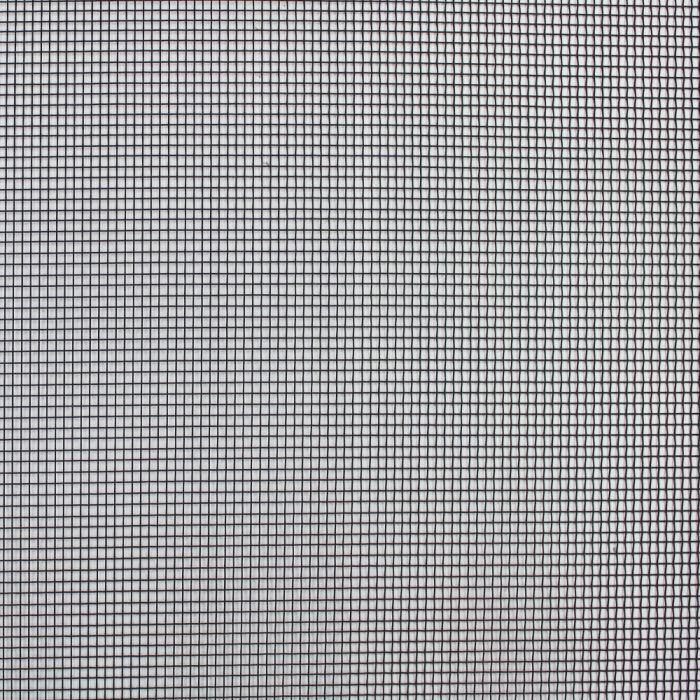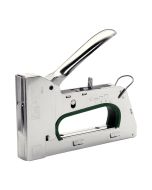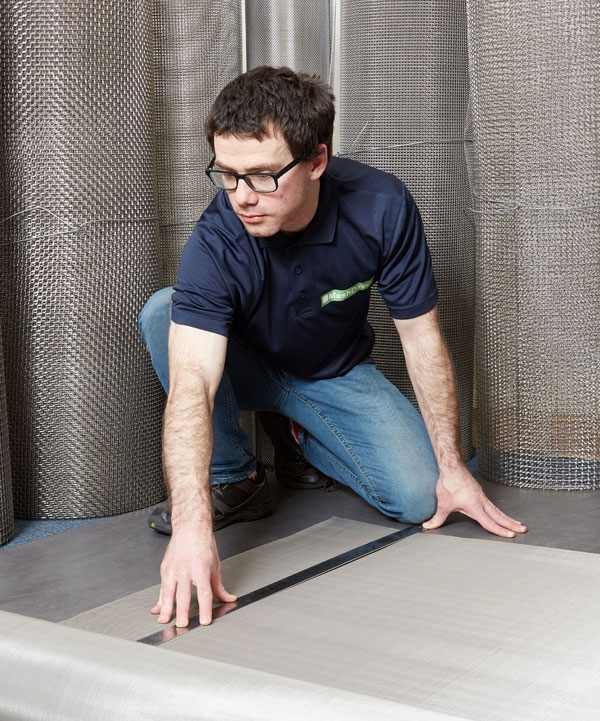Black Woven Aluminium Fly & Insect Screen
High quality black epoxy resin coated woven aluminium insect mesh. Available in 7.5cm to 30cm wide rolls, and 1.2m wide rolls.
Black Woven Aluminium Fly & Insect Screen
High quality black epoxy resin coated woven aluminium insect mesh. Available in 7.5cm to 30cm wide rolls, and 1.2m wide rolls.
| Size | Price | Qty | |
|---|---|---|---|
Roll Width 1.2m (4ft) |
|||
|
1.2m wide x 6m roll
Imperial Measurements: (4ft x 16ft) Code: BLK-WOVEN6 More info Less info Our black epoxy resin coated aluminium insect mesh is a fine mesh with a small hole size. Given that the material is flexible, it may need the support of a frame to add rigidity. |
|
||
|
1.2m wide x 30m roll
Imperial Measurements: (4ft x 98ft) Code: BLK-WOVEN-30-1200 More info Less info Our black epoxy resin coated aluminium insect mesh is a fine mesh with a small hole size. Given that the material is flexible, it may need the support of a frame to add rigidity. |
|
||
Roll Width 7.5cm (3 Inch) |
|||
|
7.5cm wide x 30m roll
Imperial Measurements: (3 inch x 98ft) Code: BLACK-ALU-75-30 More info Less info Our black epoxy resin coated aluminium insect mesh is a fine mesh with a small hole size. Given that the material is flexible, it may need the support of a frame to add rigidity. |
|
||
Roll Width 10cm (4 Inch) |
|||
|
10cm wide x 30m roll
Imperial Measurements: (4 inch x 98ft) Code: BLACK-ALU-100-30 More info Less info Our black epoxy resin coated aluminium insect mesh is a fine mesh with a small hole size. Given that the material is flexible, it may need the support of a frame to add rigidity. |
|
||
Roll Width 15cm (6 Inch) |
|||
|
15cm wide x 30m roll
Imperial Measurements: (6 inch x 98ft) Code: BLACK-ALU150-30 More info Less info Our black epoxy resin coated aluminium insect mesh is a fine mesh with a small hole size. Given that the material is flexible, it may need the support of a frame to add rigidity. |
|
||
Roll Width 20cm (8 Inch) |
|||
|
20cm wide x 30m roll
Imperial Measurements: (8 inch x 98ft) Code: BLACK-ALU-200-30 More info Less info Our black epoxy resin coated aluminium insect mesh is a fine mesh with a small hole size. Given that the material is flexible, it may need the support of a frame to add rigidity. |
|
||
Roll Width 30cm (12 Inch) |
|||
|
30cm wide x 30m roll
Imperial Measurements: (12 inch x 98ft) Code: BLACK-ALU-300-30 More info Less info Our black epoxy resin coated aluminium insect mesh is a fine mesh with a small hole size. Given that the material is flexible, it may need the support of a frame to add rigidity. |
|
||
Description
Our black epoxy resin coated woven aluminium insect mesh is perfect for keeping out flies and other insects. Aluminium insect mesh is extremely light, and is easy to bend into a desired shape. We offer a range of roll widths and lengths to suit various applications. The 10cm to 15cm wide rolls are ideal for use on soffits, or behind cladding. The wider rolls are perfect for producing insect screens, or for covering larger areas such as roofs. Given that the mesh is flexible, it may need the support of a frame to add rigidity.
The black epoxy resin coating not only protects the aluminium, it also helps the mesh to blend in with the background. Therefore, this product is an excellent option for discreet insect protection.
Specification
- Black epoxy resin coated woven aluminium insect mesh
- Aperture (hole size) 1.36 mm x 1.36 mm
- Wire thickness 0.23 mm
- Open area 73%
- Weight 230 grams per square metre
- Roll Heights: The heights of the rolls are manufactured to metric measurements (centimeters). We have rounded the imperial height conversions up or down for simplicity.
All measurements +/- 5%. If you require a micrometer reading of the wire thickness then please call us on 01782 820 970.
Reviews
Reviews
Delivery & Returns
Delivery and returns
You can rest assured that we will always do our utmost to deliver your goods as quickly as possible. Your order will be delivered with an accredited courier or pallet carrier, and we also carry large stocks in our warehouse which allows us to dispatch goods quickly.
Although we understand that speed of delivery is very important to our customers, a delay in the courier networks is always a possibility, and on occasions orders can also be delivered as a split delivery. For this reason, it's not possible for an online business to 100% guarantee delivery dates. However, should a delay with the couriers occur we will do our very best to resolve this as a matter of urgency.Delivery Costs:
Mainland England & Wales Postcodes
Orders over £60:
Standard service up to 3 Working Days (any order over £60.00) - FREE
Express Delivery service 1 to 2 Working Days (any order over £60.00) - £6.98 per order
Orders under £60:
Standard service up to 3 Working Days (any order under £60.00) - £6.98 per order
Express Delivery service 1 to 2 Working Days (any order under £60.00) - £12.98 per order
Due to the additional carriage costs for shipping posts, a small carriage supplement applies to orders for chain link fence posts as below:.
Chain Link Posts Delivery Costs
Orders over £60:
Standard service up to 3 Working Days (any order over £60.00) - FREE
Express Delivery service 1 to 2 Working Days (any order over £60.00) - £6.98 per order
Orders under £60:
Standard service up to 3 Working Days (any order under £60.00) - £19.99 per order
Express Delivery service 1 to 2 Working Days (any order under £60.00) - £26.99 per order
Please note that delivery dates are not guaranteed. There is always a risk that consignments may be delayed by couriers.
An Express Delivery is also not available for the following England postcodes: TD15, CA8, CA20.
Mainland Scotland (Excluding Grampian and Scottish Highlands)
Orders over £60:
Standard service up to 5 Working Days (any order over £60.00) - £3.98
Express Delivery service 1 to 2 Working Days (any order over £60.00) - (Currently unavailable, coming soon)
Orders under £60:
Standard service up to 5 Working Days (any order under £60.00) - £9.98 per order
Express Delivery service 1 to 2 Working Days (any order under £60.00) - (Currently unavailable, coming soon)
Chain Link Posts Delivery Costs
Orders over £60:
Standard service up to 5 Working Days (any order over £60.00) - £3.98
Express Delivery service 1 to 2 Working Days (any order over £60.00) - (Currently unavailable, coming soon)
Orders under £60:
Standard service up to 5 Working Days (any order under £60.00) - £22.99 per order
Express Delivery service 1 to 2 Working Days (any order under £60.00) - (Currently unavailable, coming soon)
Scotland Grampians (AB Postcodes)
Orders over £60:
Standard service up to 5 Working Days (any order over £60.00) - £10.98
Express Delivery service 1 to 2 Working Days (any order over £60.00) - (Currently unavailable, coming soon)
Orders under £60:
Standard service up to 5 Working Days (any order under £60.00) - £17.99 per order
Express Delivery service 1 to 2 Working Days (any order under £60.00) - (Currently unavailable, coming soon)
Chain Link Posts Delivery Costs
Orders over £60:
Standard service up to 5 Working Days (any order over £60.00) - £19.97
Express Delivery service 1 to 2 Working Days (any order over £60.00) - (Currently unavailable, coming soon)
Orders under £60:
Standard service up to 5 Working Days (any order under £60.00) - £29.99 per order
Express Delivery service 1 to 2 Working Days (any order under £60.00) - (Currently unavailable, coming soon)
Northern Scotland, Scottish Highlands* 3 - 5 day service only
Orders over £60.00, delivery charge £25.99; (£35.99 for chain link posts)
Orders under £60.00, delivery charge £32.99; (£42.98 for chain link posts)
*This delivery charge only applies to certain postcodes. Please enter your postcode at the checkout to generate the shipping cost.
Isle of Wight up to 7 Working Days
Orders over £60.00, delivery charge £19.98; (£23.99 for chain link posts)
Orders under £60.00, delivery charge £26.98; (£32.99 for chain-link posts)
All prices include VAT
Northern Ireland, Isle of Man, Chanel Islands, Isle of Skye, Scottish offshore Islands, and non-UK deliveries - Depending on the product and quantity required, we may be able to quote for non-UK Mainland deliveries. Please e-mail us at [email protected] for a carriage quote.
Delivery Information
Deliveries are usually made between 8.30am and 6.30pm Monday to Friday excluding public and bank holidays. During busy periods our couriers may deliver up to 9:00 p.m.
Weights indicated throughout this website are a combination of actual weights and volumetric weights and so are for calculating shipping costs only they do not necessarily represent the actual weights of products shown.
Mesh Direct makes every effort to ensure that your goods arrive to you within the specified delivery times using accredited couriers.
Delivery service times are not guaranteed as goods may be delayed once handed to our courier. We will not accept claims for late delivery of orders whatever the reason.
All deliveries must be signed for by the customer or by a person acting on behalf of the customer unless specific arrangements are agreed before shipping. Customers requesting parcels to be left without signing do so at their own risk.
Customers wishing to return an order must contact our customer services department in writing within 14 calendar days of receiving the goods at [email protected]
The above forms part of our terms and conditions of sale. This does not affect your statutory rights as a consumer.









